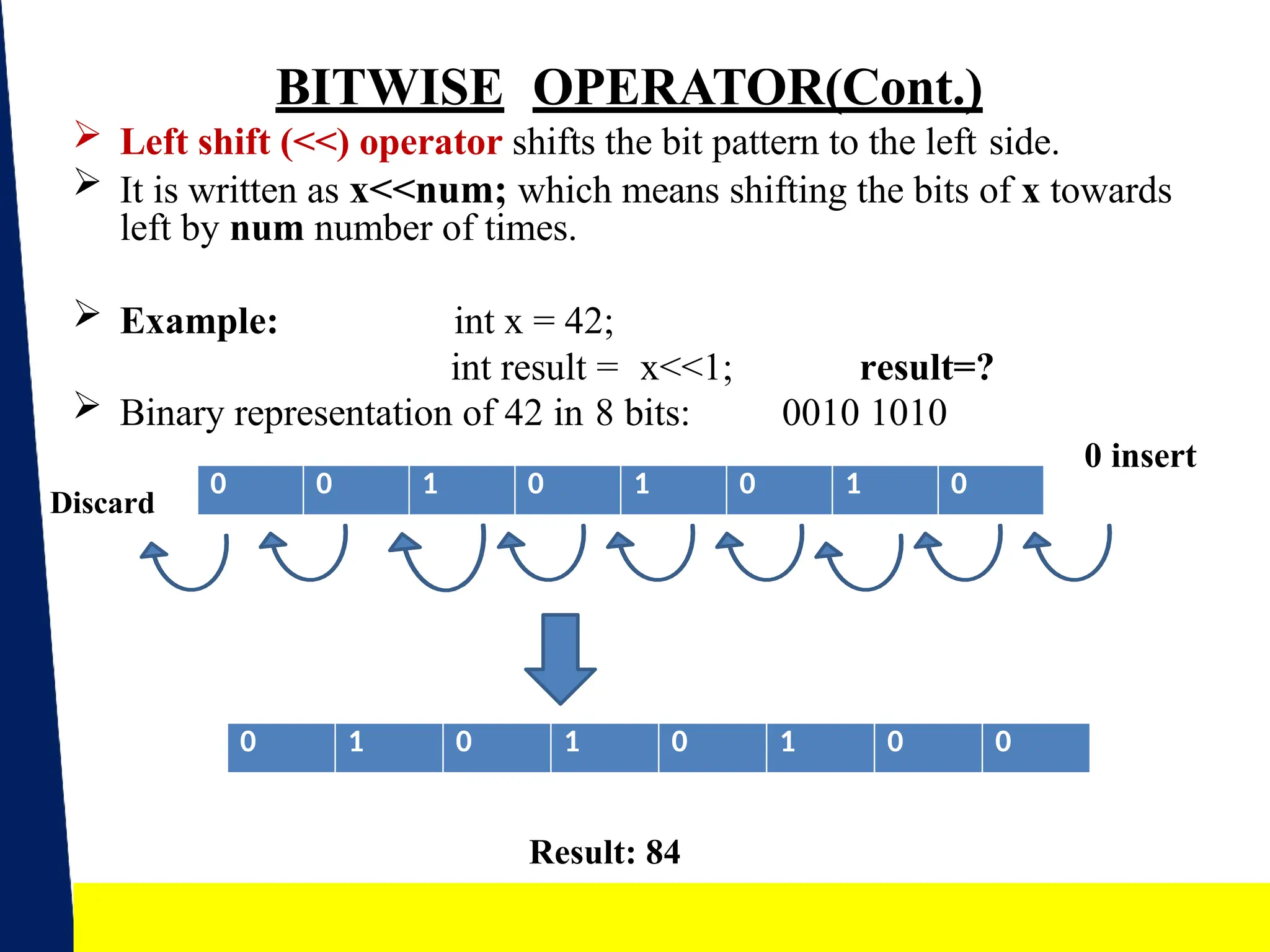The document provides a comprehensive overview of operators in the C programming language, detailing various types such as arithmetic, relational, logical, bitwise, and special operators. It includes definitions, examples, and syntax for each operator type, along with relevant C code snippets. Additionally, it presents practical programming exercises to reinforce the concepts discussed.




















![21
PRACTICE PROGRAMS
1.Write a program to check a number is positive or negative.
2. Write a program to find maximum among three numbers.
3. Write a program to enter a four digit number and find out sum of its
digit using % and / operators.
[Example:1234= 1+2+3+4=>10]
4. Mahesh s
‟ basic salary is input through the keyboard. His dearness
allowance is 40% of basic salary , and house rent allowance is 20%
of basic salary. Write a program to calculate his gross salary.
[Example: Gross salary= Basic + DA+HRA]
5. The Distance is input through the keyboard. Write a program to
convert and print this distance in meters, feet, inches and
centimeters.](https://image.slidesharecdn.com/3operatorsinc-240922051151-4ee56b23/75/Operators-in-C-programming-language-pptx-21-2048.jpg)
